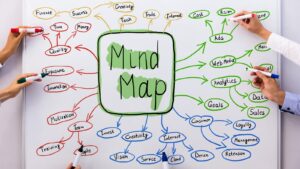By Giuseppe Carone
How many goodly creatures are there here! How beauteous mankind is! O brave new world That has such people in’t!
William Shakespeare, ‘The Tempest’
Some time ago, I happened to watch a BBC TV programme about the impact of technology on the working world, in particular in the port of Rotterdam, Holland (CLIC@bbcclick).
That port, one of the biggest in the world, was completely operated by autonomous machines from a control tower which one operator ran standing in front of an instrument panel and some computers. Big heavy containers and goods were loaded onto and unloaded from ships by completely autonomous machines, no dockers at all (it seemed a ghostly place, with objects moving around but nobody in sight!).
It is undeniable that innovative changes are creating a worrisome scenario and raising worrying questions, too. What about the workforce? Since manual work is being automated, what is the impact of automation and technology in general on society? How do we, foreign language teachers, adopt and adapt to the new technology and the work system?
2001: ‘Common European Framework of Reference’
One of the most outstanding publications for foreign language teaching professionals was the ‘Common European Framework for Languages: Learning, Teaching, Assessment’, published by the Council of Europe in 2001. In the ‘incipit’ (beginning) of the work, the reader can find its ‘raison d’étre’:
The Common European Framework provides a common basis for the elaboration of language syllabuses, curriculum guidelines, examinations, textbooks, etc. across Europe. It describes in a comprehensive way what language learners have to learn to do in order to use a language for communication and what knowledge and skills they have to develop so as to be able to act effectively. The description also covers the cultural context in which language is set. The Framework also defines levels of proficiency which allow learners’ progress to be measured at each stage of learning and on a life-long basis.” (Chap. 1, par.1.1, p.1).
Nothing revolutionary, one might say.
However, the Council of Europe thought it necessary, in the full general blueprint of the making of the European Union (EU), to lay the foundations and establish principles for a shared and common understanding and realization of foreign language teaching syllabuses, objectives and assessment scales (A1-A2, B1-B2, C1-C2). An honourable action, but always following on in the tradition of FLT didactics. A milestone for all language experts, it has helped and still continues to inspire both language course authors and teachers in their daily grind.
For about 15 years everything flowed smoothly; teachers carried on their job responding to the needs of the students in the most satisfactory ways, according to the new teaching methodological trends, such as: cooperative learning, flipped class, CLIL (Content and Language Integrated Learning), CALL (Computer-Assisted Language Learning), TBL (Task-Based Learning), Corpora and Lexical approaches.
However, the effects of technology on FLT were felt more and more. Computers were linked on the Internet and spoke, that is, they provided interactive language training programmes; CDs and DVDs provided endless teaching material to work with at school and at home; ‘edutainment’, got through play-stations and computer-games, offered enjoyable learning never experienced before. New technology, which means computers, MP3 players, tablets and smartphones, allowed people to choose ‘where’, ‘when’, ‘what’ and ‘how’ to learn.
Broadcasting, addressed to many people, became narrow-casting, addressed to one single person. “The learner has excellent opportunities for interaction and can to a degree govern the speed and content of the lesson.” (Nick Dawson). The new technological means led their users to engage in a type of communication both synchronous and asynchronous. The learner was enabled to become teacher of himself.
IWB (Interactive White Board), CALL (Computer-Assisted Language Learning) and CMC (Computer-Mediated Communication) were methodological forms of TELL (Technology-Enhanced Language Learning) that led teachers and learners to interact in virtual classrooms or virtual learning environments (VLEs).
2015: faster and faster
In the last three years formative and mathetic ways and means at all school levels have undergone faster and faster changes. Specialists, teachers, educators and all education stakeholders have been talking more and more of e-teaching and e-learning. In fact nowadays, thanks to the Internet, everybody has access to web-based and online learning.
Old traditional teachers are recycling themselves by acquiring new working skills to be up to the tasks of e-teaching.They have become e-learners themselves because technology has put them in the role of learners alongside their students. The teacher is no longer the possessor of knowledge and truth to be transmitted and to fill the minds of young generations with, like the Dickensian ‘little vessels … ready to have imperial gallons of facts poured into them until they were full to the brim.” (‘Hard Times’, Book 1, Chapter 1, 1854).
The teacher is first an education architect and then a facilitator, a coordinator of activities in the long and wide student-centered learning process. In today’s rapidly changing world, class-based and computer-mediated learning seem to be the right form to create the right blend for student centered learning.
Teachers and students alike dispose of a wide range of learning technologies that assist various types and levels of learning styles and preferences. These new learning processes need to be analysed and studied to better understand their present impact and future consequences on the students’ brain mechanisms and minds. New psycholinguistic, sociolinguistic and pedagogical studies are necessary for a safe and formative use of the tools today’s most advanced technology offers.
Future forecast
According to the Western utilitarian (capitalist?) way of life, every operating system in the working world, schools included, obeys to the good value for money law. Our educational system costs the State a lot of money due to the construction and maintenance of school buildings and school staff wages (both of them are not exploited 24/7/365). As soon as State managers realize that they can achieve the same goals and get the same results implementing a cheaper educational system, they will adopt it.
At every school grade and level, the present system might change with all that AI technology offers: 1. robots, used both in manual and repetitive jobs; 2. Robot-tutors; 3. Video-conferencing (telemigrant); 4. 3D lifelike digital holographic speakers/tutors.
Furthermore, it is possible to get an updated and wider view of the most advanced AI technology applied to language processing googling the following headings: a. Natural Language Processing (NLP); b. Google Open-Sources BERT: A Natural Language Processing Training Technique; c. Google Translate AI invents its own language to translate with; d. Google Neural Machine Translation (GNMT)
These apps process language with a kind of cognitive software which connects words and meaning in a phrase and then contextualizes the phrase in the sentence with a backward and forward understanding view. Moreover, the more they translate, the more they improve their working strategies by themselves.
‘The Telegraph’ paper (08/01/2019) published the following article: ‘Google unveils instant language translator that lets people hold conversation in real time’, by James Titcomb. It reported that “The tech giant has unveiled an ‘interpreter mode’ for its voice-controlled speakers that allow two people speaking different languages to hold conversation in real time”. Google presented it at the Las Vegas Consumer Electronics Show (Jan. 2019).
A piece of breaking news of these days is reported by the journalist Dan Robitzski in his article (Futurism: 15 Feb. 2019) entitled ‘Scientists have made an AI that they think is too dangerous to release’. It says that “OpenAI … has developed the most advanced language processing algorithm so far.
the AI system is an extraordinary step forward, producing text rich with context, nuance and even something approaching humor. It’s so good, in fact, that OpenAI says it’s not releasing its code to the public because its researchers are scared it could be misused. … The algorithm, GPT-2, trained on some 8 million web pages, given a prompt, churns out passages of text that are far more coherent than past attempts to build AI with contextual knowledge of language.” Link: https://www.weforum.org/agenda/2019/02/amazing-new-ai-churns-out-coherent-paragraphs-of-text It is simply amazing, awesome, or is it? What next?
Part of the answer to this question and a full articulate view of the challenges ahead can be found in the book: ‘The Globotics Upheaval: Globalization, Robotics, and the Future of Work’, January 2019, written by the economist Richard Baldwin.
Conclusions
AI is radically changing the old way of life at an exponential speed and is creating new concepts of time, space and freedom, hopefully an enhanced humanity as well. As everybody can see, the development of this technology will allow people to move all over the world, real and virtual, without the problem of incommunicability. The teaching and the learning of foreign languages will continue, but AI technology is already changing their ways and scope.




